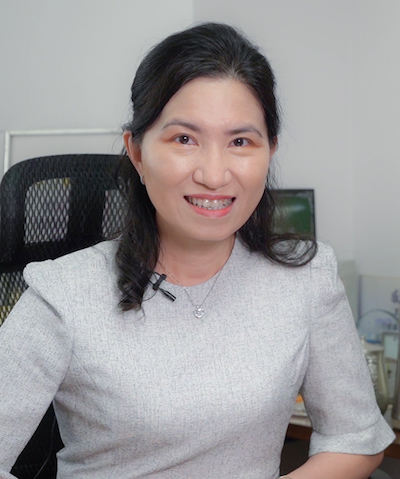Lung Cancer - Traditional Chinese Medicine Treatment
Information provided/updated by:
Dr. Lam Tao Yi,
Registered Chinese Medicine Practitioner,
Member of the "Public Education Subcommittee" of the Hong Kong Anti-Cancer Society

Introduction:
In this article, Dr. Lam Tao Yi introduces us to how traditional Chinese medicine treats lung cancer.
A. Overview (including organs, systems, and the use and differences of terms in traditional Chinese medicine and Western medicine)
B. Cause/Symptoms/Diagnosis
C. Treatment Methods
A. Overview (including organs, systems, and the use and differences of terms in traditional Chinese medicine and Western medicine)
According to the data from the Department of Health in May 2020, lung cancer is the second most common cancer among men in Hong Kong and the third most common cancer among women. Of the new cancer cases recorded in 2017, 15.7% were lung cancer cases, with a total of 5178 new cases of lung cancer, 3247 in men and 1931 in women, with a male to female patient ratio of about 1.7 to 1. Most patients are over 50 years old. The crude incidence rates per 100,000 population by gender are 95.7 for men and 48.3 for women.
B. Cause/Symptoms/Diagnosis
[Causes of Lung Cancer]
Smoking is one of the main causes of lung cancer, including smoking or long-term inhalation of second-hand smoke (also known as passive smoking). Other common risk factors in Hong Kong include aging, air pollution, and thoracic radiotherapy. Exposure to certain chemicals or building materials (such as asbestos, nickel, uranium, chromium compounds, arsenic, polycyclic hydrocarbons, and chloromethyl ether) due to industrial and occupational reasons can also be one of the risk factors.
[Common Symptoms of Lung Cancer]
Early lung cancer generally has no obvious symptoms, but as the disease worsens, lung cancer will affect the surrounding lung tissue, and the following symptoms will appear:
-Persistent cough,
-Blood in sputum,
-Pain when coughing or taking a deep breath,
-Repeated infections of the chest and lungs or long-term healing,
-Hoarseness,
-Loss of appetite and weight loss,
-Fatigue,
-Swelling of the fingertips, or
-Swelling of the lymph nodes in the neck, etc.
[Traditional Chinese Medicine View]
The cause and mechanism of lung cancer, "Miscellaneous Diseases Origin (雜病源流犀燭):
"When the pathogen accumulates in the chest, it obstructs the counterflow of qi, and the qi cannot pass through, it becomes phlegm... it becomes blood, both the pathogen and the healthy qi are fighting, and when the pathogen wins, the healthy qi cannot control it, and it forms a mass."
Li Yong Cui of the Qing Dynasty stated in "Evidence-Based Medicine - Phlegm Syndrome"(清 · 李用粹《證治匯補 · 痰證》): "The spleen is the source of phlegm production, and the lung is the receptacle that holds phlegm". This refers to the close connection between the spleen and the lungs in terms of meridians and functions. Factors such as unregulated diet, overeating of greasy and hard-to-digest food, external contraction of seasonal pathogens, long-term exposure to damp environments, excessive anxiety, or overwork can all damage the function of the spleen and stomach, leading to the spleen failing in transportation, abnormal metabolism of water and fluids, stagnation in the chest and diaphragm, and accumulation of phlegm. The phlegm then stagnates in the lungs.
Traditional Chinese medicine believes that the cause of lung cancer is often due to external pathogens invading the lungs, or deficiency of healthy qi, leading to stagnation of lung qi, accumulation of phlegm, and formation of pathological features such as phlegm-dampness, heat consumption, qi damage, and yin damage. Different pathogenesis mechanisms include phlegm-heat obstructing the lungs, phlegm-dampness binding the lungs, and lung heat yin deficiency.
C. Treatment Methods
There are many treatment methods for lung cancer, including surgery, radiation therapy, chemotherapy, targeted therapy, immunotherapy, and traditional Chinese medicine treatment.
The treatment method will be chosen based on the morphology of the patient's tumor, the affected range, the patient's health status, and age.
When traditional Chinese medicine treats any disease, it treats the whole person. The basic principle of traditional Chinese medicine in preventing and treating diseases is to reinforce the healthy qi and eliminate the pathogenic factors. Reinforcing the healthy qi is to assist the body's healthy qi, which is equivalent to enhancing immunity in Western medicine; eliminating the pathogenic factors refers to removing the source of disease, pathogenic factors, or other environmental factors.
In the treatment of cancer with traditional Chinese medicine, the emphasis is on holism, which not only focuses on eliminating pathogenic factors but also on reinforcing the healthy qi, that is, assisting the body's immunity to fight against cancer.
The means of traditional Chinese medicine treatment include many different methods, not only prescribing Chinese medicine, but also diet therapy, acupuncture, ear points, massage, cupping, exercise, etc. Therefore, during Western medicine treatment, if traditional Chinese medicine methods are used, they just need to be coordinated in terms of choices. For example, Chinese medicine should not be taken during chemotherapy, but diet therapy, acupuncture, or ear points can be used as auxiliary treatments to alleviate symptoms.
Therefore, traditional Chinese medicine cancer treatment can be applied throughout all stages of tumor treatment, enhancing the patient's resistance and jointly fighting against cancer.
1. Early Stage Lung Cancer
In response to the staging of lung cancer, early treatment is mainly surgery, with the goal of radical cure of the tumor. Postoperative treatment with traditional Chinese medicine can not only reinforce the healthy qi and replenish deficiency, but also prevent tumor metastasis or recurrence, improve the patient's visceral function, and promote recovery.
2. Mid-Stage Lung Cancer
For patients in the middle stage, it is necessary to use Western medical treatment, such as chemotherapy, radiotherapy or targeted therapy, etc. Traditional Chinese medicine treatment combined with Western medicine treatment can reduce the side effects of Western medicine treatment, improve the patient's discomfort symptoms during treatment, such as nausea, vomiting, diarrhea, etc., so that patients can successfully complete the course.
3. Late-stage lung cancer
The treatment of late-stage lung cancer patients is to prolong the patient's survival period, help patients alleviate discomfort symptoms and improve their quality of life. Traditional Chinese medicine treatment can improve the quality of life of patients, especially for late-stage patients, traditional Chinese medicine can reinforce the healthy qi, let patients live with tumors, alleviate discomfort symptoms, maintain the function of viscera and bowels, try to improve the quality of life of patients, and prolong the survival period.
Whether it is traditional Chinese medicine or Western medicine, they all hope to help patients get the most suitable treatment. However, Chinese and Western medicines are always different. It is recommended to tell the doctor frankly, hoping to cooperate with each other, so as not to have adverse reactions when Chinese and Western medicines are used together, such as liver and kidney function damage, which will aggravate the disease and delay the treatment.
(January 2021)




